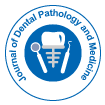Oral Cancer: Causes, Symptoms, Diagnosis, and Management
Received Date: Feb 01, 2025 / Accepted Date: Feb 28, 2025 / Published Date: Feb 28, 2025
Abstract
Oral cancer is a major public health concern, ranking among the most prevalent cancers globally. It encompasses malignancies affecting the lips, tongue, cheeks, floor of the mouth, hard and soft palate, sinuses, and pharynx. Despite advancements in diagnostic techniques and treatment modalities, oral cancer continues to have a high morbidity and mortality rate due to late diagnosis. This article provides a comprehensive overview of oral cancer, covering its epidemiology, risk factors, clinical presentation, diagnostic methods, treatment approaches, and preventive strategies. Oral cancer, a significant global health concern, encompasses malignancies that affect the lips, tongue, floor of the mouth, cheeks, hard and soft palate, sinuses, and throat. It is primarily classified as a subtype of head and neck cancers, with squamous cell carcinoma being the most prevalent histological type. The incidence of oral cancer continues to rise, particularly in developing countries, due to the widespread use of tobacco, alcohol, and betel quid, alongside emerging factors such as human papillomavirus (HPV) infections and genetic predisposition. Early symptoms are often subtle and easily overlooked, contributing to delayed diagnosis and poor prognosis. Clinical manifestations typically include persistent ulcers, difficulty swallowing, chronic sore throat, unexplained bleeding, and voice changes. The diagnostic process involves a combination of clinical examination, imaging modalities such as MRI and CT scans, and histopathological evaluation through biopsy. Adjunct techniques like toluidine blue staining, brush biopsies and salivary diagnostics have also shown promise in early detection. Effective management of oral cancer requires a multidisciplinary approach encompassing surgery, radiation therapy, chemotherapy, and targeted biological agents. Recent advancements in immunotherapy and molecular-targeted treatments have opened new avenues for improved survival outcomes. Moreover, rehabilitation post-treatment is crucial in restoring speech, mastication, and overall quality of life. Public health strategies focusing on prevention, awareness, and early screening are essential to reduce the global burden of this disease. This review aims to provide a comprehensive overview of the etiology, clinical presentation, diagnostic tools, and therapeutic modalities associated with oral cancer, highlighting current trends and future directions in its management.
Citation: Priya S (2025) Oral Cancer: Causes, Symptoms, Diagnosis, andManagement. J Dent Pathol Med 9: 257.
Copyright: © 2025 Priya S. This is an open-access article distributed under theterms of the Creative Commons Attribution License, which permits unrestricteduse, distribution, and reproduction in any medium, provided the original author andsource are credited.
Select your language of interest to view the total content in your interested language
Share This Article
Recommended Journals
Open Access Journals
Article Usage
- Total views: 255
- [From(publication date): 0-0 - Oct 21, 2025]
- Breakdown by view type
- HTML page views: 187
- PDF downloads: 68
